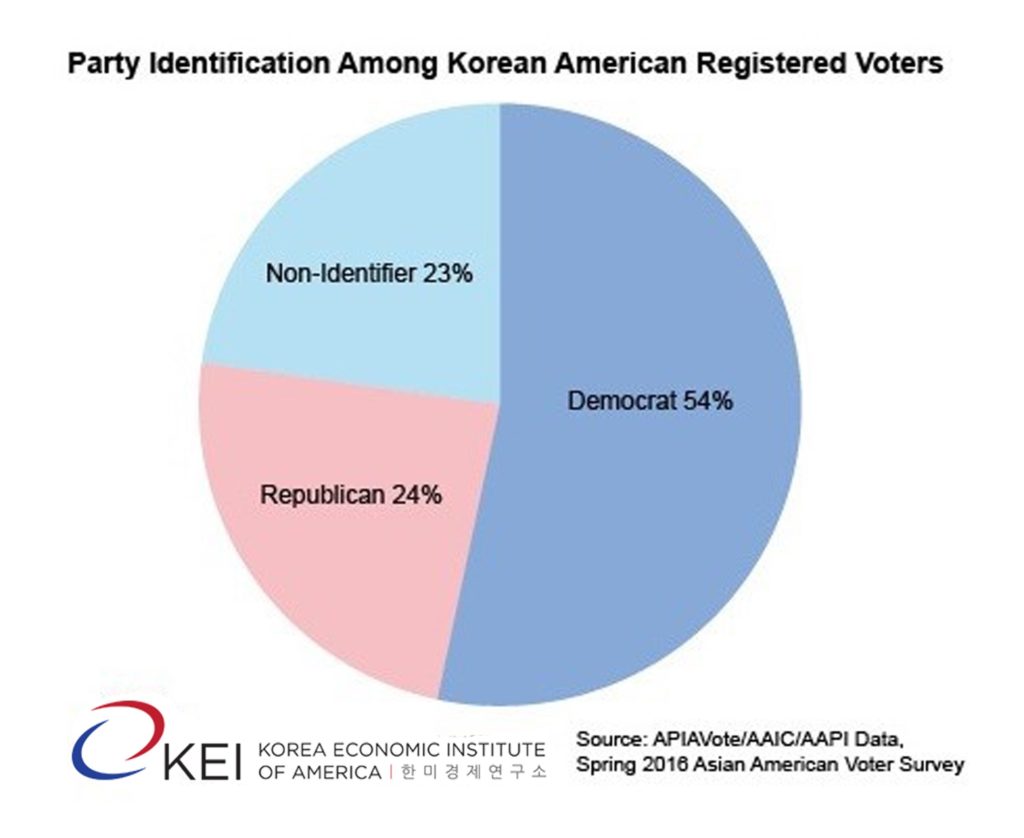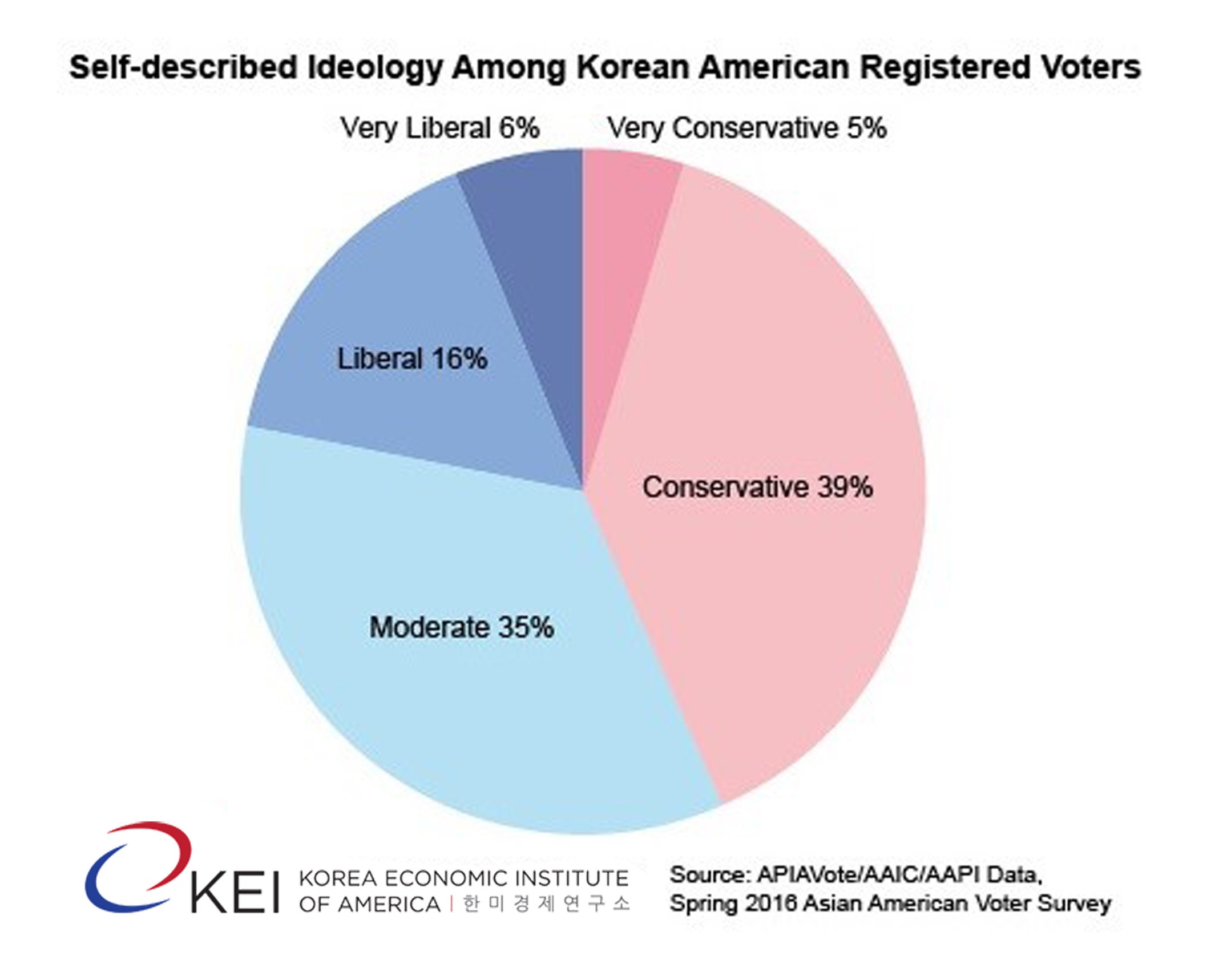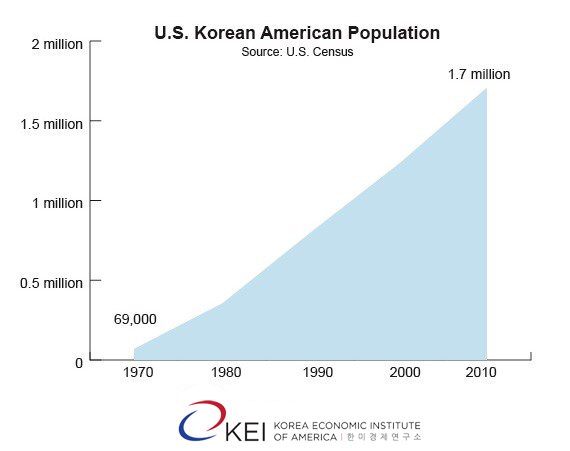The Peninsula
The Korean-American Vote: Looking to the 2016 Presidential Election and Beyond

By Juni Kim
A recent survey published by three Asian American NGOs provided new insights into the voting preferences of Korean-Americans for the 2016 presidential election. These results highlight the continuing shift of Korean-American voters towards the Democratic Party over recent years. Although the Korean-American population in most states may be relatively small compared to other demographics, this political trend and the growing population of Korean-Americans in certain states should not be underestimated by either major political party. This election may not become the hallmark of the Korean-American vote, but the continued population growth of Korean-Americans and other Asian Americans will enable them to become a formidable political force in future elections.
The survey reported that 62% of Korean-Americans viewed the Republican Party unfavorably compared to only 24% of Korean-Americans who viewed the Democratic Party unfavorably. Korean-Americans also viewed Republican presidential candidate Donald Trump very unfavorably, with 80% of Korean-Americans holding adverse views of the presumed Republican nominee. Conversely, Korean-Americans view the two remaining Democratic candidates less harshly with only 37% of Korean-Americans viewing Hillary Clinton unfavorably and 28% for Bernie Sanders. Korean-American voters also identify with the Democratic Party over the Republican Party by more than two-to-one.
Although these numbers suggest preferences for more typically liberal candidates, Korean-American voters have the interesting paradox of mostly identifying with the Democratic Party despite a larger reported preference for conservative ideology. Korean-American voters self-identify two-to-one as conservative or very conservative (44%) compared to liberal or very liberal (22%). It is worth noting that 35% of Korean American voters also self-identify as moderate. In a 2013 analysis of the 2012 presidential election results, Dr. Taeku Lee, a Professor of Political Science at UC Berkeley, advised, “The Democratic Party cannot take the partisan consolidation of Korean-Americans for granted.”
The pivot towards the Democratic Party by Korean-Americans is a relatively recent trend shared with other Asian American voters. Only 31% of Asian American voters in 1992 voted for Bill Clinton, the Democratic candidate in the 1992 presidential election, compared to the 55% that voted for Republican candidate George HW Bush. Every presidential election since then has seen an increase in Asian-American support for the Democratic candidate, which reached a new high of 73% in the past 2012 election.
The notable percentage of self-identified conservatives and moderates among Korean-American voters suggests that a large number of Korean-Americans do not see the current state of the Republican Party as a proper representation of their conservative views. Although there is much ground to recover, the Republican Party still can make a case by supporting and maintaining more moderate platforms, which Dr. Lee noted will have to include moderate stances on health care reform, progressive taxation, and immigration reform to regain Korean-American votes. If such actions occur under the GOP, more Korean-American voters may identify themselves with the Republican Party and vote accordingly.
Population growth
Although Korean-Americans today currently make up a relatively small portion of the total U.S. population, the Korean American population continues to climb steadily. From under 70,000 residents in 1970, the population has grown to more than 1.7 million U.S. residents in 2010. Korean-Americans have established significant population hubs in California, New York, Texas, Illinois, Georgia, New Jersey, and Virginia.
With expected continued population growth, Korean-American and Asian-American voters will hold increased influence in some battleground states. A January 2016 AAPI (Asian Americans and Pacific Islanders) Data article noted that AAPI voters constituted significant shares of the electorates in three battleground states (Florida, Nevada, and Virginia) proportional to the presidential vote margin in the 2012 general election. The Korean-American population has had significant growth rates in all three of these states with a 50% increase in Florida, a 93% increase in Nevada, and a 62% increase in Virginia from 2000 to 2010. New York, which has over 150,000 Korean American residents, also poses interesting questions for the upcoming presidential election considering the shared connections between all three remaining major party candidates and the state.
Admittedly the current Korean-American population hubs may not be large enough to swing a state in the upcoming election, but the Korean-American vote is worth watching in the years to come. The continued population growth of Korean-Americans and sizable proportion of moderate voters makes the Korean-American vote worthy of attention from both major political parties.
Juni Kim is the Program Manager and Executive Assistant at the Korea Economic Institute of America (KEI). Thomas Lee, an Intern at KEI and graduate of American University, also contributed to this blog. The views expressed here are the author’s alone.
Photo from Gene Han’s photostream on flickr Creative Commons.



